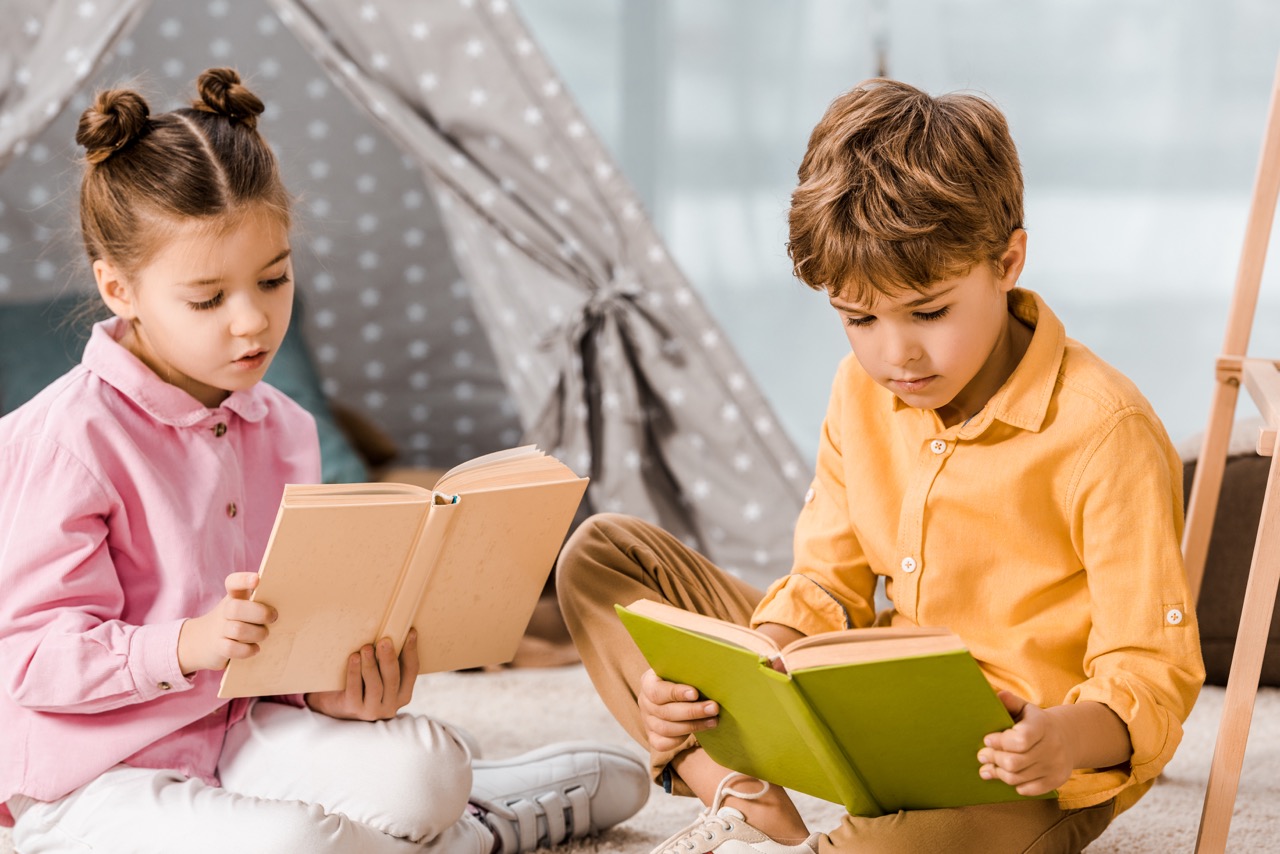In an increasingly digital world, fostering a love for reading in children is more vital than ever. Non-fiction books offer a valuable avenue for children to explore real-world topics, develop critical thinking skills, and cultivate a sense of wonder about the universe. These texts introduce young readers to facts, ideas, and experiences that can inspire them to learn more about their interests and the world around them. In this article, we delve into the significance of non-fiction in children’s literature, explore engaging topics, and provide guidance on selecting the right books to support young readers in their literary journey.
The Importance of Non-Fiction in Children’s Literature
Non-fiction books play a crucial role in children’s literature by providing factual information and real-life stories that expand a child’s understanding of the world. Unlike fiction, which often relies on imagination and creativity, non-fiction presents truths about nature, history, science, and culture that can help children build a foundation of knowledge. This type of literature encourages analytical thinking skills as readers learn to discern facts from opinions and explore different viewpoints on a given subject.
Moreover, non-fiction caters to diverse learning styles. Visual learners can benefit from infographics, photographs, and illustrations that accompany many non-fiction titles. Auditory learners may find joy in reading aloud factual stories, while kinesthetic learners can engage with interactive texts or experiments that accompany the subject matter. By providing varied formats, non-fiction books can appeal to a wider audience, making it easier for all children to connect with the material.
Finally, non-fiction literature fosters curiosity and ignites a passion for lifelong learning. When children find a topic that captivates them, they are more likely to seek additional information and resources. Non-fiction books can serve as gateways to further exploration, whether through documentaries, museum visits, or even hands-on projects. This natural inclination to learn can set the stage for academic success and personal growth throughout their lives.
Engaging Topics That Spark Curiosity in Young Readers
One of the most appealing aspects of non-fiction for children is the sheer variety of topics available. From the wonders of space exploration to the intricacies of animal behavior, non-fiction books can transport readers into fascinating realms of knowledge. Topics such as dinosaurs, ancient civilizations, and the human body not only captivate young minds but also introduce them to the broader concepts of science and history in an engaging manner.
Additionally, non-fiction texts can be tailored to fit the specific interests of individual readers. For example, a child fascinated by ocean life can delve into books about marine biology, while another intrigued by technology can explore the latest innovations in robotics. This personalization allows children to connect reading with their passions, creating a more meaningful experience that encourages continued exploration and inquiry.
Books that highlight current events, social issues, or environmental challenges can also help children develop empathy and awareness of the world around them. By learning about topics such as climate change, cultural diversity, or community service, young readers can cultivate a sense of responsibility and a desire to make a positive impact. These themes not only educate but also empower children to become informed and engaged citizens.
Top Non-Fiction Genres That Kids Will Love to Explore
There are several non-fiction genres that cater to the diverse interests of young readers. One popular genre is nature and science, which encompasses topics such as wildlife, ecosystems, and space. These books often use vivid imagery and engaging narratives to explain complex concepts in an accessible manner, making them perfect for curious minds eager to learn about the world around them.
Another captivating genre is history, which can transport children to different eras and cultures. Biographies of influential figures, explorations of ancient civilizations, and accounts of significant events allow readers to connect with the past and understand the journey that has led to the present. History books can often evoke a sense of wonder and inquisitiveness about the people and events that have shaped our world.
Lastly, the genre of how-to and DIY guides invites children to engage in hands-on activities that foster creativity and critical thinking. Whether it’s cooking, crafting, or coding, these books can empower children to take initiative and explore their interests actively. This genre not only enhances practical skills but also instills a sense of accomplishment and confidence as they learn to tackle projects independently.
How to Choose Age-Appropriate Non-Fiction Books
Selecting age-appropriate non-fiction books is essential for ensuring that children stay engaged and motivated to read. Consider the child’s reading level, interests, and cognitive maturity when choosing a book. For younger children, look for books with simple language, engaging visuals, and interactive elements such as flaps and textures. These features can help maintain their attention and foster a love of learning.
For older children, it’s important to find texts that challenge them intellectually while remaining accessible. Books that introduce more complex topics should ideally provide context and explanations that are age-appropriate. Parents and educators can look for award-winning titles or those with recommendations from reputable sources, as these often indicate quality content tailored for specific age groups.
Additionally, consider the emotional readiness of the child regarding certain subjects. While some children may be ready to explore challenging themes like loss or social justice, others may not be. Parents and caregivers should be attuned to the child’s responses and preferences, encouraging open discussions about the content to promote understanding and empathy.
Tips for Encouraging Kids to Read Non-Fiction Titles
Encouraging children to read non-fiction can be made enjoyable with a few simple strategies. First, lead by example. Demonstrating a love for non-fiction yourself can inspire children to follow suit. Share your own interests with them, and discuss interesting facts or stories you come across in your reading. This creates a shared experience and encourages them to explore similar topics.
Integrating non-fiction into daily routines can also help create a reading habit. Consider setting aside specific times for reading together, whether it’s bedtime stories or afternoon sessions about intriguing subjects. You could create themed reading nights where you explore a particular topic through various non-fiction books, documentaries, or hands-on activities. This not only reinforces the material but also solidifies the bond between reading and leisure.
Finally, reward exploration and curiosity by allowing children to choose their own non-fiction books. Visit local libraries or bookstores together, and encourage them to browse and select topics that catch their interest. This autonomy can lead to a more profound engagement with the material, as children are more likely to read what they have chosen themselves. Celebrate their discoveries, and encourage conversations about what they learned, reinforcing the value and excitement of non-fiction literature.
Resources for Finding Great Non-Fiction Books for Kids
Finding quality non-fiction books for kids can be an enjoyable adventure in itself. Start by checking out award lists such as the Orbis Pictus Award for Outstanding Nonfiction for Children or the Sibert Medal, which honors distinguished informational books. These lists provide a curated selection of titles known for their quality and educational value.
Online platforms and websites can also serve as excellent resources for discovering non-fiction books. Websites like Common Sense Media offer reviews and recommendations tailored to various age groups. Additionally, platforms like Goodreads can provide personalized suggestions based on user ratings and reviews, allowing parents and caregivers to make informed decisions about what to purchase or borrow.
Finally, don’t underestimate the power of community. Local libraries often host events and reading programs that highlight non-fiction texts. Librarians can also offer personalized recommendations based on a child’s interests and reading level. Engaging with fellow parents, teachers, and book clubs can yield insights into other beloved titles and emerging trends in children’s non-fiction literature, creating a rich resource network for discovering great books together.
Exploring non-fiction books for kids opens up a world of knowledge and wonder. As children engage with factual texts that align with their interests, they cultivate essential skills that will serve them throughout their lives. By understanding the importance of non-fiction, identifying engaging topics, and utilizing resources to find age-appropriate literature, parents and educators can nurture a generation of curious, informed readers. Encouraging exploration through non-fiction not only enriches children’s understanding of the world but also inspires a lifelong love of learning that can lead to endless possibilities.










